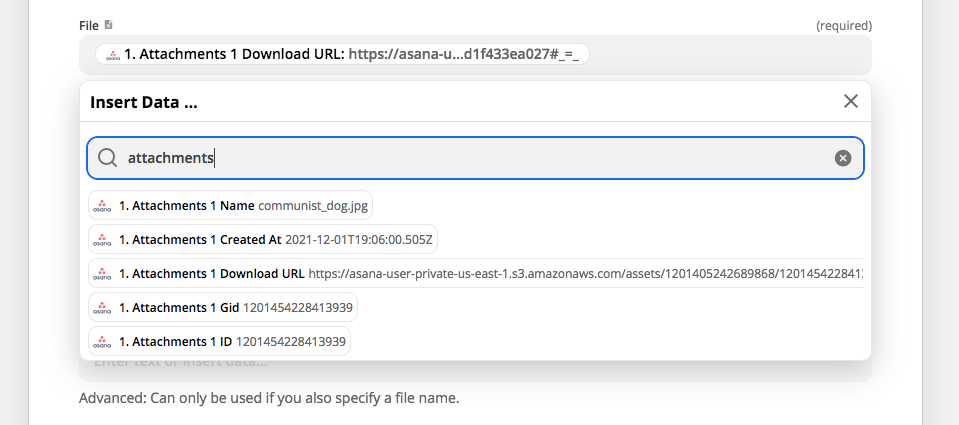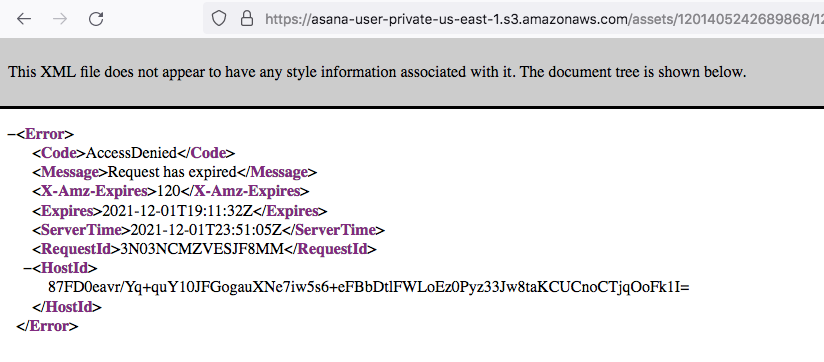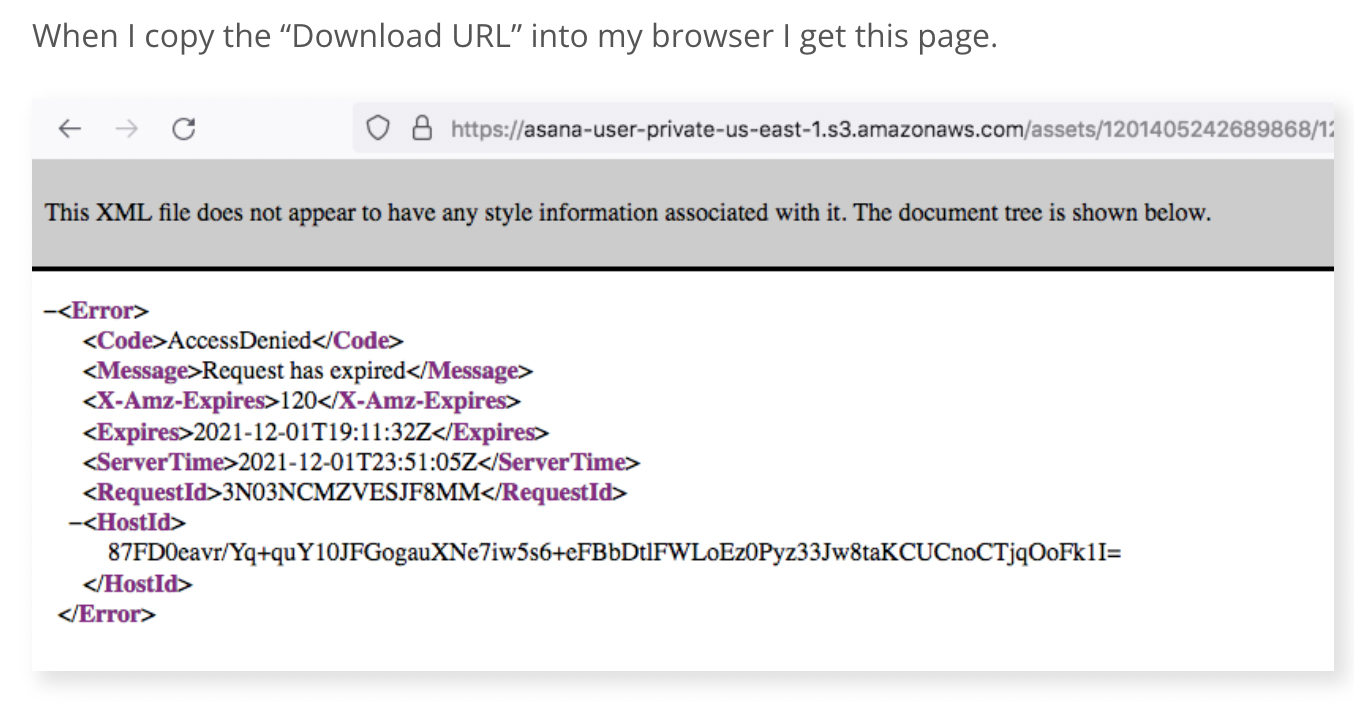Hey guys, I’m getting a “The app has returned: ‘Request has expired’” error when automating uploads of my Asana attachments to Google Drive (not Google Drive to Asana).
Our team does construction work in the Colorado mountains. We track each project in an Asana card and upload photos of the completed job using the attachments feature. We don’t want to have our data trapped in Asana should we ever change platforms, so we are trying to backup our projects into Google Drive.
My Zap looks something like this:
> When ‘TRIGGER’ in Asana
> Create new Folder in Google Drive
> Create text file in Google Drive (custom data from Asana fields ‘Owner’, ‘Address’, ‘Phone’, etc)
> Upload attachments from Asana to Google Drive
On the last step I get a “The app has returned: ‘Request has expired’” error.
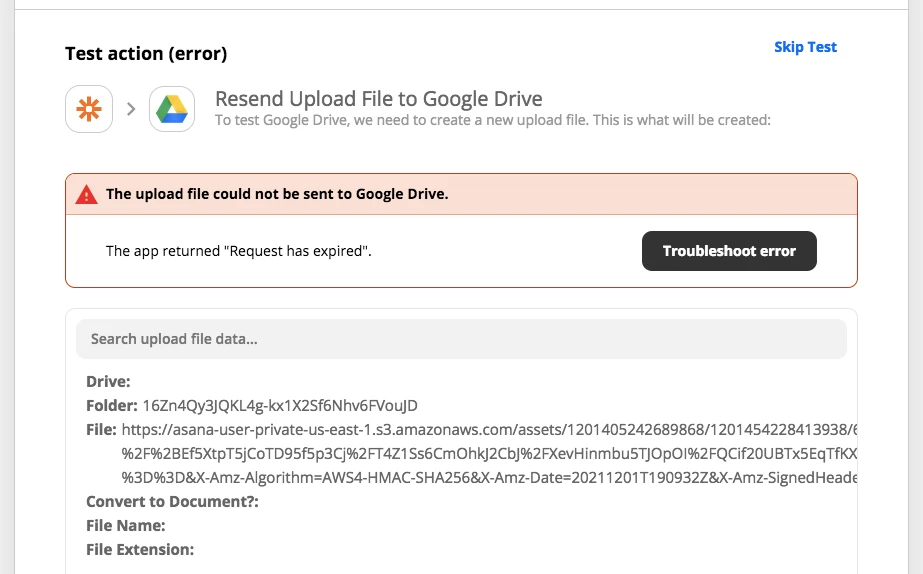
Our Zap is set up like this:
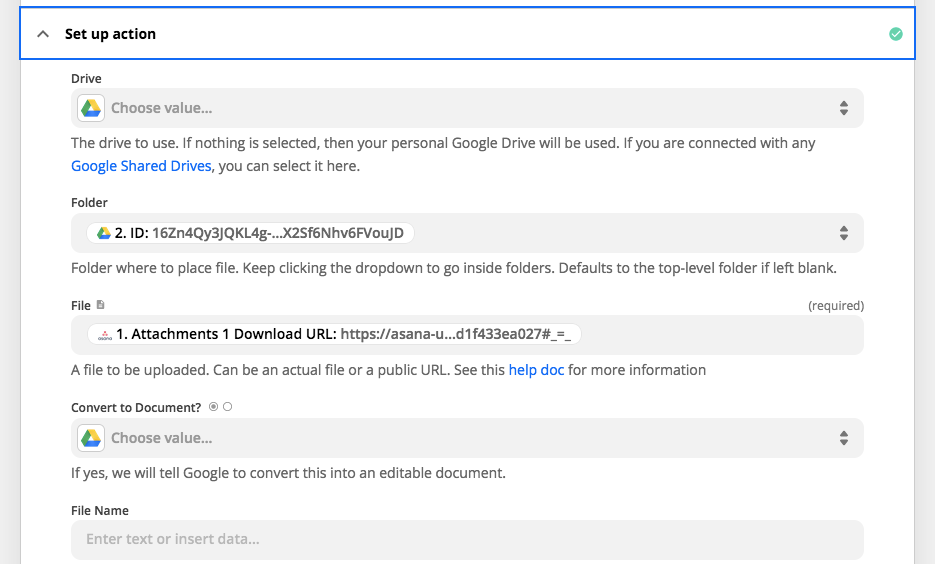
As you can see, the Zap identifies the ID of the Google Drive folder we just created, then attempts to pull the attachments download URL from Asana.
I noticed that the file URL leads to Amazon Web Services.
Is this possibly a “permission” problem as Zapier tries to pull data from AWS without Asana’s “credentials”?
Any workarounds for this?






